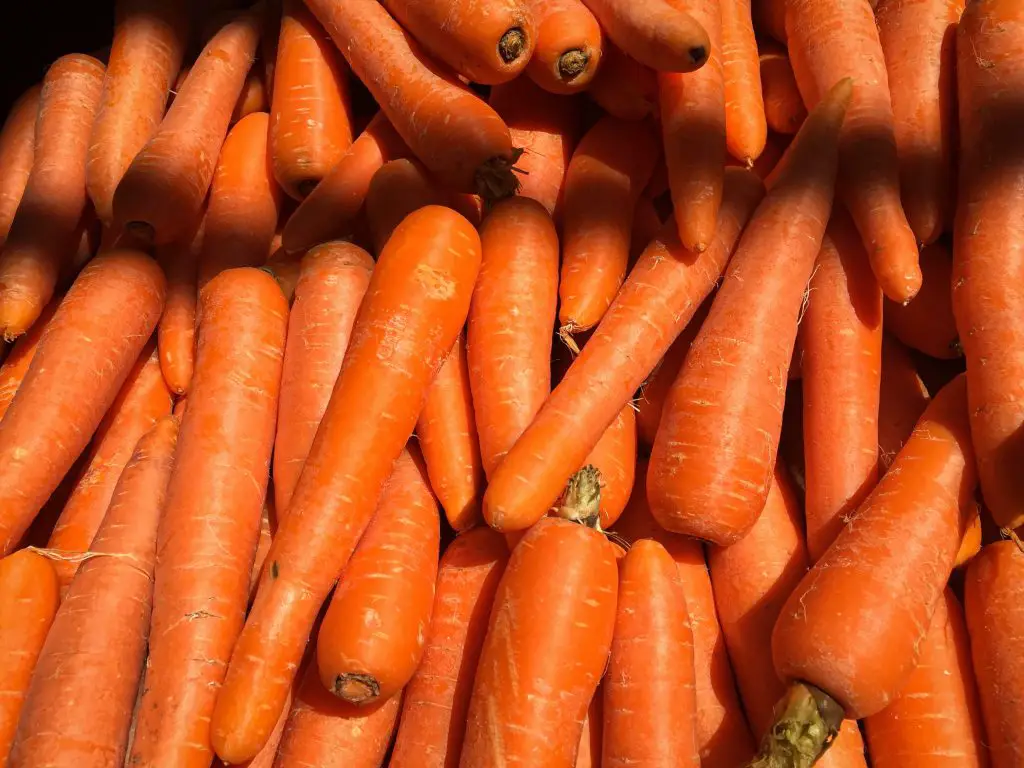Why Are My Carrots So Hairy? Carrots are a popular vegetable that is eaten widely all over the world because it is a readily available vegetable that can also be successfully grown in your garden and home. However, if you are growing carrots at home you may have experienced the situation where the carrot appears to be hairy. Why does that happen?
Carrots generally produce a lot of fine roots which give the appearance of it being hairy because the plant is searching for either water or nutrients. The fine roots on most plants are the feeder roots which are generally the most important roots for accessing nutrients in the soil. This is because they increase the surface area of the root system.
The primary root of the carrot, which is the section we eat, has a large mass but relatively little surface area so this means that unless the water is in abundance the plants will need to access the water and some other way. The plant does this by producing a large amount of these small feeder roots which will solve the problem.

How To Prevent The Carrot From Becoming Hairy
There are a couple of things that you can do which will help to reduce the volume of feeder roots that the carrot producers. However, many of these steps do need to be done prior to planting the carrot seeds.
One of the most common steps is to ensure that your soil has excellent water retention which can generally be improved by adding compost to the soil prior to planting. However, one of the concerns that many people share in adding extra nutrients to the soil is that it will increase the level of forking of the carrots.
However, academic studies have shown that increasing the nitrogen level of the soil is actually has a minimal effect on the percentage of carrots that are forked and it provides a beneficial outcome in terms of the size of the yield that can be produced. To read more about this study click here.
The second important thing that can be done to improve the water retention of the soil is to apply a thick layer of mulch as this will ensure that any water that the soil receives is retained for a longer period. When applying mulch the layer should be approximately 2 to 4 inches thick to ensure that any light is excluded. It is best to use a light fluffy material such as straw rather than something like wood chips which will have a negative effect upon the soils nitrogen level in the short term.

Wood chips are generally not recommended for vegetable gardens because they contain a high degree of carbon and very little nitrogen. The bacteria that degrades woodchips over time needs a source of nitrogen and will often take it from the soil in the short term while it is degrading the wood chips. This process can deprive the soil of nitrogen in the short term which can affect plant growth.
Is It Ok To Eat Hairy Carrots
Pulling out of carrots that have loads of feeder roots all over it is not the end of the world. While it may not be the most attractive prize-winning carrot that you’ve ever produced it is still a highly edible carrot that can be happily used in the kitchen without a problem.
To remove the roots simply use a peeler to remove the skin of the carrot which will also remove any of these fine roots which makes the carrot look a little bit unsightly. To completely get rid of any evidence of the presence of these additional roots you may have to peel the surface of the carrot more than once however this will not affect the flavor of the carrot, only the appearance.

Are Some Carrot Varieties More Susceptible To Becoming Hairy
There are certain varieties of carrot that will generally produced higher degrees of hair on the surface of the carrot. These varieties are generally the ones that produce shallower roots such as round carrots.
The reason for this is that the level of moisture retention of the soil decreases close to the surface. Carrots with shorter roots carrots do not have the same degree of penetration is larger ones and they are more susceptible to dry conditions which will increase the probability of feeder roots being produced in large numbers.
Are There Any Other Negative Effects From Lack Of Moisture
Apart from the carrots being relatively hairy, there are other effects that you may observe. One of them will be a relatively small and stunted carrot compared to what you would normally expect. The reason for this is because all plants require water to photosynthesize. Reducing the amount of water will affect the rate of growth and therefore the size of the root that is produced.
The other common effect of lack of moisture, or at the very least inconsistent levels of moisture, is that you can see cracking within the carrot which still makes a carrot edible however it does increase the chances of the plants being attacked by pests within the soil.
These problems can generally be overcome by watering more regularly to ensure that plants do maintain moisture for longer periods.
I hope you have found this article useful and have great success with your carrots, if you have any additional questions or comments please leave them in the section below.
Relevant Articles
Tricks To Planting Carrot Seeds That Really Work
How Many Carrots Grow From One Seed?
Are Green Carrots Safe To Eat? What can I Do To Stop Them From Turning Green?

